We may earn commissions when you buy from links on our site. Why you can trust us.
Dexcom Stelo: A Simple Way to Monitor Glucose – No Prescription Needed
In March 2024, the FDA approved the first over-the-counter continuous glucose monitors (CGMs), marking a quiet but significant shift in how we can track and understand our health. Devices like Dexcom’s Stelo and Abbott’s Lingo are no longer just for people managing diabetes with a prescription – they’re now available to anyone who wants insight into how blood sugar affects energy, mood, sleep, and long-term health.
After reviewing Lingo earlier this year, I’ve now spent a month with Dexcom’s Stelo, the only other FDA-cleared over-the-counter CGM currently on the market. Both deliver on their core promise: real-time glucose tracking without a doctor’s visit. But they take different approaches – and depending on what you’re looking for, that matters.
What Makes Stelo – and OTC CGMs – Different
Traditional prescription CGMs like the Dexcom G7 are designed for people with diabetes, offering tight integration with insulin pumps, customizable alerts, and clinician support. Over-the-counter CGMs like Stelo are stripped down to the essentials: they’re meant for people who aren’t taking insulin but want to monitor glucose for broader wellness reasons – such as improving energy, managing weight, or spotting hidden food sensitivities.
The Stelo biosensor looks like a medical patch – gray plastic, 25mm by 28mm, with a large adhesive ring that holds it in place for up to 15 days. It’s applied to the back of your upper arm, where it continuously measures glucose levels just beneath the skin. You pair the sensor with the Stelo app, and from there, you get a real-time view of your levels, alerts when spikes happen, and a record of your recent readings.

| + Pros | – Cons | ||
|
|
||
|
|||
A Month with Stelo: The Experience
Dexcom sent me a month’s worth of sensors, and I used them in two sessions – first with the original app, then with the newly updated version. The latest update brings one long-overdue feature: historical data. Previously, you lost access to your glucose data once the sensor expired. Now, you can go back and review trends across the full time you’ve been wearing sensors. That’s a meaningful upgrade, especially if you’re trying to understand long-term patterns.
The app itself still feels pretty basic. It does a solid job of showing your glucose graph and alerting you to spikes. For instance, it was immediately obvious that my morning dirty chai latte had a noticeable impact on my levels. You can log events like meals, exercise, or emotional stress, but you have to switch over to a separate screen to see those notes. It’s a small thing, but the lack of integration between the graph and your log makes it harder to connect cause and effect in real time.

That said, the app does nudge you toward reflection. Like Lingo, Stelo highlights recurring spike patterns and suggests possible triggers. You also get summary reports showing how often you were in your target range, along with educational content on why levels rise and fall. If you’re simply looking to keep tabs on your glucose and get prompted when something’s off, Stelo’s experience is likely more than enough.
How It Compares to Lingo
Coming from Lingo, I immediately noticed the difference in tone and functionality. Lingo offers a more engaging, lifestyle-oriented experience. You get features like the Lingo Count – a proprietary score to help visualize how well you’re managing fluctuations – and optional “Challenges” that prompt you to experiment with different food, exercise, and sleep habits.
Stelo is more clinical in presentation. It’s not trying to coach you so much as inform you. That may be a plus or minus, depending on how self-directed you are. On the other hand, Stelo pulls in data from Apple Health, so you can view sleep, activity, and steps alongside your manually entered meals. Lingo doesn’t do that yet.
Another important difference: compatibility. Lingo only works with iPhones. Stelo works with both iPhones and Android phones, which makes it the more accessible option for people who don’t live inside the Apple ecosystem.
As for accuracy, I noticed that my glucose readings were consistently a bit lower with Stelo than with Lingo, though both tracked the same general trends. I can’t say definitively which one was more accurate, but the pattern consistency gave me confidence in the overall insights.
Read more: Glucose Monitoring Made Easy: My Take on Abbott’s Lingo
Design and Wearability
The Stelo's design is distinctly medical – a small gray plastic puck surrounded by a small ring of visible adhesive. It lacks the white polished consumer look of the Lingo, and it's not as obvious when wearing short sleeves.
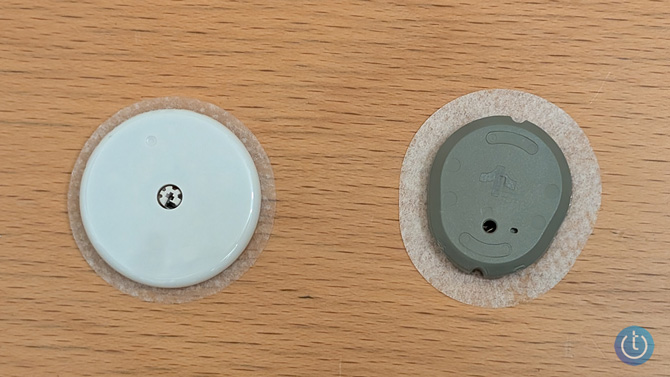
Both Stelo and Lingo use medical-grade adhesive. I liked that Stelo includes an optional extra adhesive ring – it’s not exactly stylish, but it helps keep the sensor in place, especially during workouts. Still, just like with Lingo, I found that the sensor occasionally caught on clothing. You can buy an overpatch for a sleeker hold, like the Skin Grip ($25 for a box of 20), which come in a variety of colors and patterns. It'd highly recommend them if you're planning on going to the beach or doing yard work.
The Bottom Line
Dexcom's Stelo ($99 for two two-week sensors) is a solid, no-frills entry point into the world of glucose monitoring. It’s the only option for Android phone users and is ideal for anyone who wants alerts, basic trend data, and minimal fuss. If you use an iPhone and are looking for richer guidance or motivation to build healthier habits, the Abbott Labs Lingo ($49 for one two-week sensor) still offers a more engaging experience.
[Image credit: Suzanne Kantra/Techlicious]



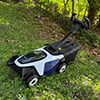

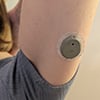


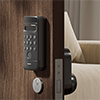



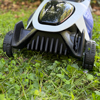
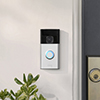


From Cathy Howard on May 07, 2025 :: 6:24 pm
Thank you so much for your honest reviews. I have been wondering how well they work. I am a diabetic, just not on insulin, so insurance won’t cover the sensors, sadly! I hate poking my fingers several times daily, so I have been thinking about investing in the monitors.
Reply